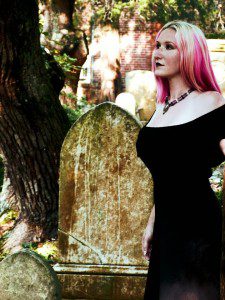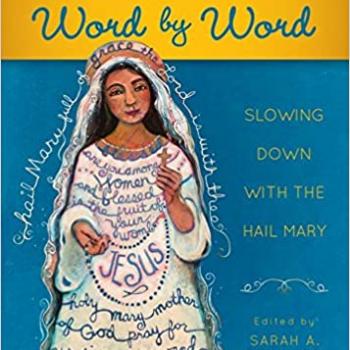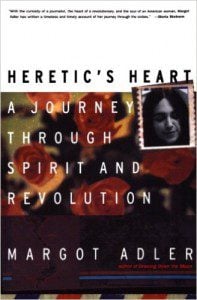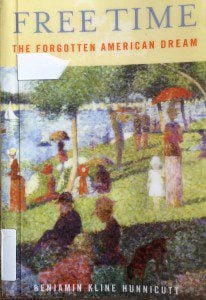Yesterday, I posted on Scarred, Scared, and Sacred: Spiritual Practices for the Fall Triduum of Halloween, Samhain, and All Souls Day. Continuing on the theme of that post, this reflection is a guest post from Irene Jericho, a member of my congregation at the Unitarian Universalist Congregation of Frederick, Maryland, and a leader of our Earth-centered Spirituality (“UU Pagan”) group.
When I was 13, one of my closest friends lost a lengthy battle with childhood leukemia. It was my first big death. The  one that changes everything about how you see the world. I come from a wonderful family, but a bit of a WASP-y one. We are understated and rational. And like many families in our culture, we didn’t really have a way to talk about grief. My experience of mourning within this culture was that you’re given a month, maybe more, to be upset. And then you’re expected to get on with it. To just get better. Get over it. And by that I think we mean repress our feelings so they don’t trouble anyone else.
one that changes everything about how you see the world. I come from a wonderful family, but a bit of a WASP-y one. We are understated and rational. And like many families in our culture, we didn’t really have a way to talk about grief. My experience of mourning within this culture was that you’re given a month, maybe more, to be upset. And then you’re expected to get on with it. To just get better. Get over it. And by that I think we mean repress our feelings so they don’t trouble anyone else.
But my own experience of grief is that it doesn’t end. It doesn’t go away. It transforms, slowly, over time, but it never ends. It never just goes away.
I think part of what initially drew me to Paganism, to Wicca, at age 15, was the holiday Samhain. As a whole, Pagans believe the soul continues after death. We also honor the cycles of nature, the Wheel of the Year, and connect to its turning on a very deep level. At this time in the world around us, the leaves are falling, leaving branches to clatter in the wind like so many bones. The growing season is ending. Shifting into the season of death, and increasing darkness. We believe that at this time, as death appears around us, so too do the souls of those who have gone before. We believe that the Veil between the living and the dead grows thin. Thin enough, that those who have gone before can hear us, can see us, and can sometimes speak across that great divide.
We build ancestral altars at this time. Both for our distant ancestors, and for the dear ones who have gone on ahead of us. Altars can be simple or complex. Sometimes it’s just taking out the old photos and putting them on the mantle where everyone can see them. Sometimes it’s a special table covered in pictures, decorations, objects we associate with our lineage. We make our loved ones’ favorite dishes for family meals. We visit cemeteries to clean off the graves, and decorate them anew. And most importantly, we have a space for grief. For allowing those places inside us to breathe. A space to speak the words aloud: I miss you. And to know that they are heard. A chance to connect. Every year. A visit with the Other Side. I spend a lot of October talking to my friend, to my grandmother, in the quiet spaces of my day. I can feel them in the air. Sense them drawing near.
The night of the 31st is when the Veil is thinnest. It’s why it’s called the Witches New Year—our cycle ends, and then begins, at the death of the growing season. Samhain Night sees big rituals honoring those who have gone before. Some traditions do a Recitation of the Dead. A calling of names. Others create a Dumb Feast: a table laid out of doors, beautifully decorated for the season, and carrying the dishes our lost loved ones and ancestors most enjoyed. That they may eat, drink and be merry, in their own way, when they visit. Personally, I gather with a close group of Pagans. We stand in a circle, and we speak about those we wish to honor. We talk to our families, to our friends who have gone beyond. We pour out libations on the ground to each. We cry. We laugh. We tell the old stories, and sing the old songs. And every year, that aching place inside us that is grief has a moment to be soothed. A chance to breathe. A moment between one year and the next, between the worlds of time and place, when we come to stillness and communion.
It is that stillness, that inner quiet, that we carry with us into winter. For Pagans, the dark season is a time to go within—to do deeper, more personal work on ourselves. Like our furry, four-legged brothers and sisters on this earth, we hibernate. We turn inward, and seek our own illumination there.
It’s easy to get distracted in the warm months—there’s so much to do! Festivals to attend, projects to start, visits, vacations… When the light begins to fade, though, a different kind of work can begin. What did you lose this year? What quiet places inside you are aching from neglect? We expend so much energy on the needs of others. Have you remembered to tend your own flame? It’s okay if the answer is no. I know it definitely is for me. That’s the other part of why I look forward to Samhain so much.
This month, I’m redecorating my home altar and beginning an 18-day sadahana: a Sanskrit word for a spiritual practice with a specific goal in mind. I’m working on integration; on trying to get all the pieces of me to be a more cohesive whole. I have a sub-goal of deeper connection, on every level. To deity, to myself, to my life. During that 18 day sadhana, I will spend time every day focusing on my goal. I will use prayer, meditation and physical yoga postures to help me on my way. It’s the beginning of what I think of as my Winter Work. My time to do some repair and upgrades on myself.
I realize that it may sound like a lot of work. I take the inner space exploration of winter pretty seriously. But honoring the energy of the dark season doesn’t have to be so elaborate. It can simply be finding a little space in your morning to set an intention for your day. To choose stillness for just a moment. It could be turning off the TV and putting away the smartphone a little earlier in the evening to allow for some quiet time. A space away from distraction and discussion. You could start journaling. Or maybe it’s time to read that book you’ve been meaning to pick up. The season of death is also the season of renewal.
You see, at Samhain, we go underground as well. Cycles occur in more than the world around us. It’s so easy to forget, with all our technology, all our bread and circuses, that we are a part of nature; not separate from it. And like the trees and animals, we need time to rest and nurture ourselves for the next growing season. We too grow weary after a long summer. We tire and fade, and need to go into darkness for a time. We renew there, heal the wounds, tend the fire within. And then we emerge again. It is my hope to step out into spring as a better version of myself. A more authentic, more grounded Irene.
I think most of all, Samhain speaks to the spark within the darkness. The loved ones that exist beyond death. The light within us that shines on the darkest of days. The comfort of a warm hearth on a cold night. This is the gift, and the lesson, of this season. That the Wheel of the Year turns, and we turn with it. That a journey into the night is not something to be feared. It is simply a part of the cycle.
May this season see you blessed with space, with peace, with stillness. A blessed Samhain to you.
Irene is a practicing Pagan of the Creative Eclectic Variety. She’s an Ordained Minister, a Labyrinth Apprentice of the New England Labyrinth Guild, a High Priestess of the Tradition of the Witches Circle and a yoga teacher. She has been reading Tarot for 22 years and practicing Paganism for 19 years. Irene taught Pagan beliefs and practices at Esoterica of Leesburg, VA, from 2005 to 2010. Irene currently facilitates monthly Labyrinth walks at the Unitarian Universalist Congregation of Frederick as well as leads rituals with a small private group.
(A video of the above post is available at https://www.youtube.com/watch?v=mMx5kklCRjA)

















